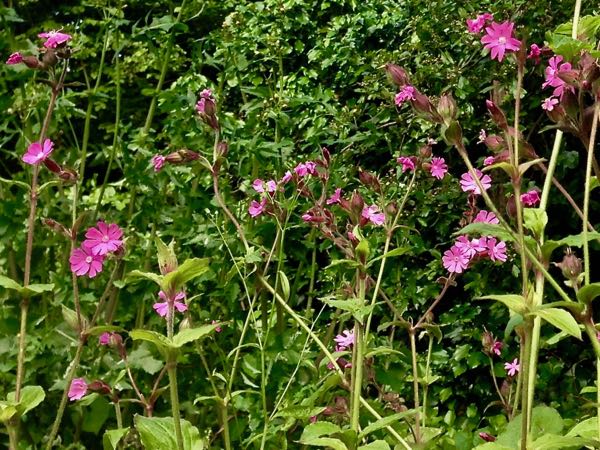Silene dioica: Cultivation Tips and Considerations
Background and Common Names: Silene dioica, also known as Melandrium rubric, Red Campion, or Red Catchfly, belongs to the Caryophyllaceae family of plants. It is a herbaceous perennial that is native to Northern and Central Europe.
Description and Blooming Season: Silene dioica displays dark pink flowers with five deeply notched petals. The notches give the impression of additional petals, enhancing the visual appeal of the blooms. Flowering occurs from April to July, adding a splash of color to gardens and landscapes. Silene dioica is a dioecious plant, meaning it produces male and female flowers on separate plants. While the flowers lack a noticeable scent, their attractive appearance makes them a welcome addition to any setting. This species typically thrives in woodlands and can adapt to various soil types.
Characteristics and Habitat: Silene dioica is characterized by its tall green stems and branching growth habit. It reaches a height of approximately 90cm or 3ft, creating an eye-catching presence in the garden. The foliage of Silene dioica consists of deep green, opposite, and ovate-shaped leaves, adding to its overall attractiveness. Its natural habitat includes woodlands, where it can be found growing in a wide range of soil conditions.
Cultivation of Silene dioica:
Sunlight: Silene dioica prefers to be grown in areas with full sun exposure or partial shade. This plant can tolerate a variety of light conditions, making it adaptable to different garden settings.
Watering: Provide regular watering to keep the soil moist, especially during dry periods. Avoid overwatering, as it can lead to root rot. Adequate drainage is essential for the plant’s overall health.
Fertilizing: Silene dioica generally does not require heavy fertilization. However, applying a balanced, slow-release fertilizer in early spring can promote healthy growth and bloom.
Pest and Disease Management: Silene dioica is relatively resistant to pests and diseases. However, it is essential to monitor for common garden pests such as aphids or spider mites. If infestations occur, treat them promptly using appropriate methods such as insecticidal soaps or organic pest controls.
Propagating Silene dioica: Silene dioica can be propagated from seeds, which are contained within ovoid capsules. Collect mature seeds from the plant and sow them between March and October. Ensure good seed-to-soil contact for optimal germination. Alternatively, division can be performed in early spring or fall to propagate new plants.
Attracting Bees and Butterflies: The vibrant flowers of Silene dioica serve as a valuable nectar source, attracting bees and butterflies to the garden. Their presence not only enhances the beauty of the landscape but also supports pollination and contributes to the overall ecosystem.
By incorporating Silene dioica into your garden, you can enjoy its striking flowers, easy maintenance, and the delightful sight of buzzing bees and fluttering butterflies.





